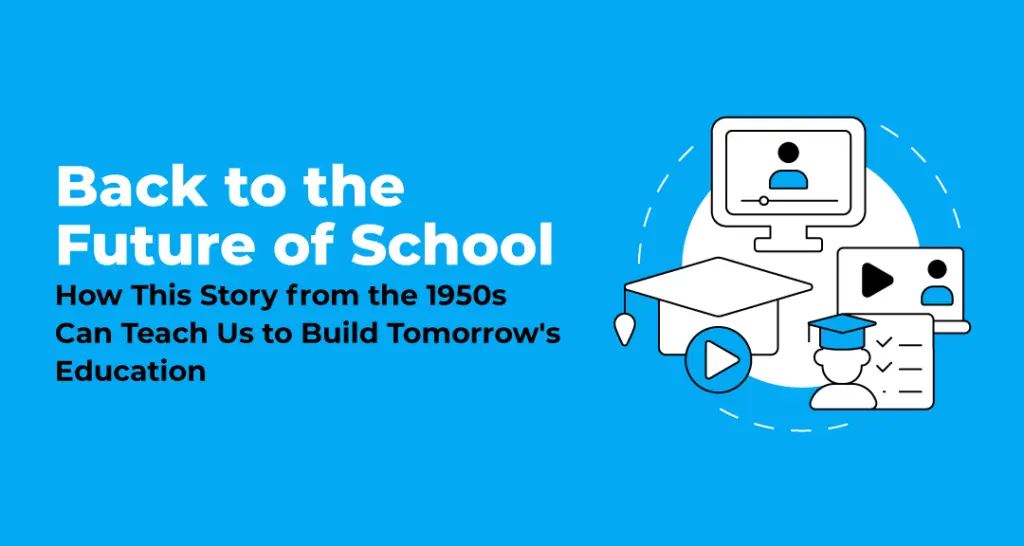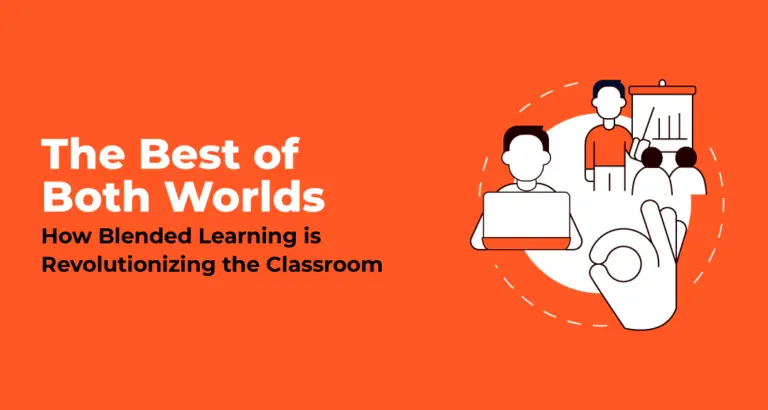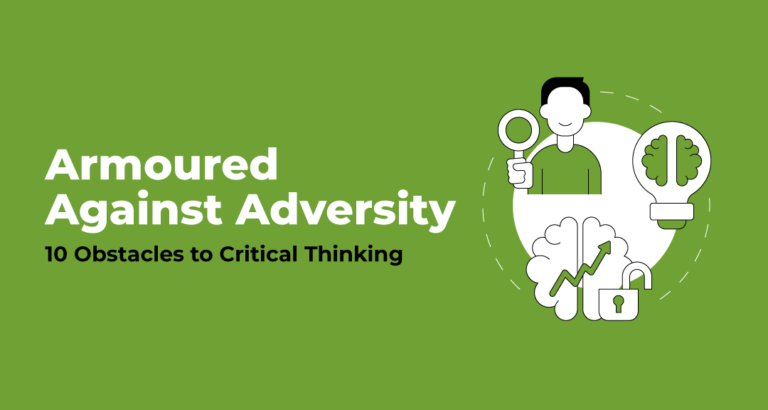Back to the Future of School: How This Story from the 1950s Can Teach Us to Build Tomorrow's Education
- School Leaders, Teaching
- July 11, 2024
- VOLT Learning

‘The Fun They Had’ is a speculative science fiction short story written by Isaac Asimov. First published in 1951, the story imagines the future of schools in the twenty-second century. Asimov’s vision conjured an isolated schooling experience for the children of the future, who are taught by a dull mechanical robot teacher at their house.
The story begins with Margie, the eleven-year-old protagonist, who is recording an extremely unusual incident in her diary – her neighbour Tommy had found a ‘book’. It was surprising for the two to look at a book with pages, unlike the ‘telebooks’ that were common in their time. The book Tommy found was about schools of the past when children went to school and were taught by human teachers. Margie found the idea of such schools funny, but she was also curious to learn more about them. Later, while she is being taught an arithmetic lesson on the black screen, fitted into her mechanical teacher, Margie wonders how enjoyable school must have been for the children in the past. The story aims to point out that classroom learning with peers and human teachers is integral to the fun of school and learning.

The first time I read this short story, I was in the ninth standard. It had struck me as particularly fascinating for two reasons: first, I was not fond of school, so the possibility of an alternative, even if it was in a faraway future, was thrilling. Second, I assumed that it will be much easier to turn off a mechanical teacher than a real one. Margie just wasn’t clever enough.
I realized that this was one of those moments when fiction had become reality.
Cut to 2021, the second year of the pandemic, I watch my younger brother struggle with his mathematics class online. The story came back to me. I realized that this was one of those moments when fiction had become reality. When I read the story as a grown-up, I related to Margie a little bit better than I had earlier.
It is almost surreal to realize that Asimov’s speculation about the future of children and schools did not take hundreds of years to come true. The futuristic world of isolated learning in which children attend school via screens is quite similar to our reality today. This closer relatability to the world in the story can help us answer one of the central, most thought-provoking questions hinted at by the story: Are the old kind of schools better than robot teachers and school-at-home?
To put it differently, when it comes to technological intervention in education how much is too much?
Romanticizing the good old past is as counterproductive as completely mechanizing something as personal and formative as education. Let’s learn a few things from Asimov’s story to avoid leaning on either of these sides.
- Extremes never offer a solution: The best possible solution can never be found in an either-or approach. Fully computerized learning without human touch will, indeed, make education dull and cumbersome for students. But fearing technological intervention in this field is not wise either. The answer lies in a blend of both of these. Lessons delivered by human teachers that are accessible to students through technology any time they need are the most effective and beneficial way of mixing learning and fun.
- Presentation matters: The most annoying thing about the mechanical teacher for Margie was not the fact that the mechanical teacher was a robot, but the mechanical way in which it taught the lessons. Teaching is nothing less than a performance. The teacher’s role is to engage, motivate and stimulate the student’s imagination, and present the same concepts in a new way each time. If the lesson is appealing as well as comprehensive enough, the student may not mind the mode of delivery as much.
Every student may not have the opportunity to be taught differently, but they must have the choice to learn differently.
- Not all students are extroverts: Group learning has its advantages. The prevalent education system focuses on it by rewarding sociable personalities who are willing to participate in organized group activities, show initiative and assume leadership roles. It is important to encourage students to collaborate with their peers. However, what we miss out on teaching young children about is the importance of individual learning. The most effective education takes place when students interact with the subjects on an individual level and learn in a comfortable setting. The shy student in the corner may not be comfortable raising their hand to ask their query, but hitting replay on a video lesson will be easier for them. Such a setup can prove to be extremely useful for children who are not neurotypical. Every student may not have the opportunity to be taught differently, but they must have the choice to learn differently.
- Homework needs to be fun too: School learning needs to get out of the loop of read-rote-repeat. Education must enable students to apply their knowledge towards problem-solving and critical thinking. For this, the practice work and homework they do needs to be interesting and thought-provoking. Technology has allowed us to gamify everything, including education. So why not use it?
‘The kids will get a bang out of the irony.’
– Isaac Asimov
When Asimov wrote this story, he said, ‘The kids will get a bang out of the irony.’
Little did he know that the future he imagined and wrote about was only sixty or so years away. The pandemic pushed children inside their homes and the school shifted to computer screens.
I wonder how students will feel when they read this for the first time today. It is upsetting to think that they may end up as sad as Margie at the end, and wonder about the fun they could have had. Let’s not let this happen.



